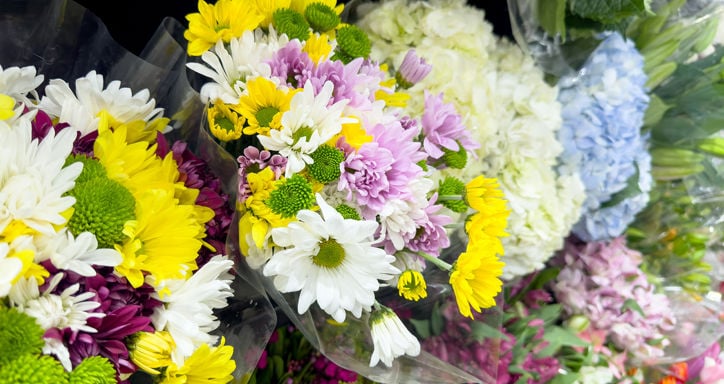IFPA partnered with Kantar to identify six growth opportunities for the floral industry to increase sales.
6 GROWTH AREAS FOR FLORAL:
- Blossoming Everywhere
- Flower Power
- Experience Ambassadors
- Augmented Arrangements
- Flowers for All
- Sustainable Stems
Sustainable Stems:
As consumers look to make informed purchases based on social and environmental impact, the floral industry can leverage engaging storytelling to offer greater transparency into sustainable practices while building industry-wide climate resilience.
Gen Z is reinterpreting and redefining what sustainability means. Gen Z views sustainability as an existential issue and one that goes beyond just the environment and climate to include things like labor and equity. It is expected that brands have a positive impact on the world through things like regenerative agriculture and the circular economy.
There is an opportunity to tell a bigger, broader story about sustainability. 81% of Gen Z and 82% of Millennials agree it’s important that the companies they buy from are clear about their values. 66% of Gen Z are willing to pay more for a product if it’s tied to having a positive impact on society.
Sustainable marketing involves promoting products that are designed as environmentally or socially conscious and/or conveying corporate or brand values and commitments to sustainability.
Sustainable Marketing Strategies
(Ballantine and Kemper at Penn State)
Doing Less Bad- promote sustainable products based on 3 attributes:
- production conditions - how products are made, e.g., safe working conditions
- product characteristics - what the product contains and what it does, e.g., cleans the air
- exposures and risks - how product use affects people and the environment, e.g., creates joy
Doing More Good – promote sustainable lifestyles by shifting messaging:
- from individual ownership to sharing or renting e.g., plants and flowers for public
consumption and given a gifts - from customer focus to external stakeholder focus e.g., plants and flowers improve the workplace, school, etc.
- from sales orientation to an education orientation e.g., educate on the power of plants and flowers and sustainable lifestyles
Doing Different - promote sustainable systems and institutions, in addition to lifestyles and products. Promote and support social enterprises that disrupt product and consumption models as a profitable way of addressing social and environmental issues. Think Patagonia’s Don’t Buy This Jacket marketing campaign encouraging consumer to consume less.

Sustainable Marketing Tips
- Have a larger purpose
- Be consumer oriented
- Be authentic and consistent
- Place value ahead of profit
- Educate your audience
- Reflect sustainability in every aspect of your brand
Getting started:
It is best to concentrate on three to five strategic priorities to maximize impact of your sustainability marketing plan. (McKinsey) Here are some initiatives you may want to consider:
Energy: How much energy is used? Can you use less or adopt clean alternative sources?
Water: How much water is used and/or wasted? How can you conserve water?
Waste: What waste is produced and where does it come from? How can you reduce waste and prevent pollution?
Products & Packaging: Do your products use sustainably sourced and eco-friendly materials? How does producing your products impact the environment? Is your packaging safe for people and the planet?
Supply Chain: Are your suppliers environmentally and socially responsible? Are you sourcing products from the closest source? Are there areas to improve supply chain efficiency?
Transportation: What vehicles do you use for distribution and operations?
Community: Do you support our local communities and farms? Do you get involved in
environmental causes, events, and associations?
Employees: Do you offer employee training in sustainability? Are you creating a green culture?
Do you communicate policies company-wide?
What's Driving This?

VALUES-BASED CONSUMERISM
RISE OF ETHICAL PRODUCTS & BRANDS
CIRCULAR ECONOMY
CLIMATE-CONSCIOUS LIFESTYLES
DEMANDS FOR TRANSPARENCY & ACCOUNTABILITY
GEN Z ATTENTION TO SUSTAINABILITY

Floral
Future of Flowers
Drive flower sales over the next 3 to 5 years with a growth strategy based on macro, category and consumer trend shifts based on 2023 research from Kantar.

Floral
Ensuring Flowers Are Always Within Reach of Shoppers
Learn how to deliver a frictionless customer experience by ensuring flowers are always within reach for supermarket shoppers with this research from Kantar.

Floral
Reducing Stress and Boosting Mood With Flowers and Plants
Learn how to engage consumer senses and emotions by talking about how flowers and plants reduce stress, boost mood and bring joy with this research from Kantar.

Floral
Floral Department Employees as Experience Designers
Elevate floral department clerks and managers to serve as flower ambassadors, teachers and experience designers to increase customer service and profits.

Floral
Leveraging Digital Tools for Floral Consumers
Leverage augmented reality and other digital tools for floral consumers as these tools are being increasingly used in retail and home design.

Floral
Flowers for ALL
Let's shift the perspective that flowers are reserved for special occasions, predominantly as gifts to women & broaden flower consumption beyond cultural norms.
